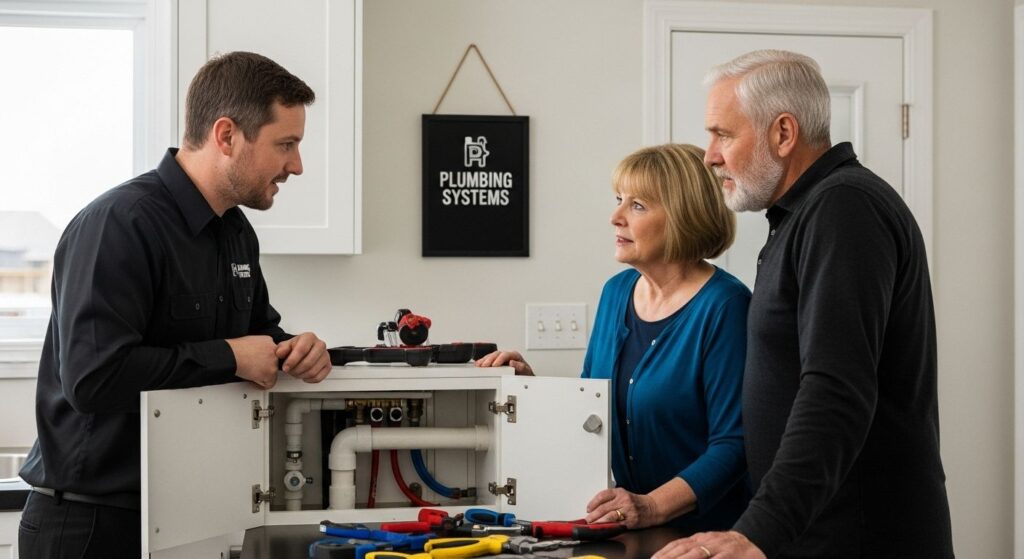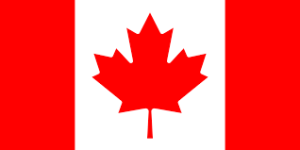Plumbing systems keep Ottawa homes comfortable year-round, quietly delivering fresh water and whisking away waste behind the walls. Even so, over 30 percent of all household water damage claims in Ottawa are linked to plumbing failures caused by frozen pipes or drainage issues. Oddly enough, many homeowners underestimate the complexity hidden beneath their floors and behind their sinks. What really surprises most people is that with just a bit of know-how and simple routine checks, you can dodge expensive repairs and outsmart the most common plumbing headaches.
Table of Contents
- Key Parts Of A Plumbing System
- How Water Flows And Gets Drained
- Common Plumbing Issues In Ottawa
- Maintenance Tips And Emergency Steps
Quick Summary
| Takeaway | Explanation |
|---|---|
| Understand your plumbing system components | Familiarize yourself with both the water supply and drainage systems to appreciate their functions and maintenance needs. |
| Prevent frozen pipes during winter | Insulate pipes and monitor for freezing to avoid costly damage in harsh Ottawa winters. |
| Conduct regular plumbing inspections | Routine checks for leaks and pressure can help catch issues before they escalate into emergencies. |
| Know your emergency response steps | Familiarize yourself with shutting off the main water valve and essential emergency measures to minimize damage during a plumbing crisis. |
| Invest in professional maintenance | Regular professional inspections and maintenance can prolong the life of your plumbing system and prevent unexpected repairs. |
Key Parts of a Plumbing System
Understanding how plumbing systems work requires a comprehensive look at their fundamental components. A residential plumbing system is a complex network of interconnected parts that work together to deliver clean water and remove wastewater efficiently. Learn more about our comprehensive plumbing services to ensure your home’s system operates smoothly.
Water Supply Network
The water supply network forms the critical infrastructure that brings fresh water into your home. This system begins at the main water line connected to the municipal water supply or a private well. According to research from Oatey, the core components include pipes, valves, and fixtures that distribute water throughout the building. Typically constructed from materials like copper, PVC, or cross-linked polyethylene (PEX), these pipes must withstand varying water pressures and temperatures.
Primary elements of the water supply network include:
- Main Shut-off Valve: Allows complete water flow control for the entire home
- Pressure Regulators: Manage water pressure to prevent pipe damage
- Water Meters: Track water consumption and detect potential leaks
Drainage and Waste Removal System
The drain-waste-vent (DWV) system is equally crucial in residential plumbing infrastructure. Research from This Old House highlights that this system does more than simply removing wastewater. It incorporates a sophisticated network of pipes designed to transport sewage and greywater away from the home while maintaining proper air pressure and preventing sewer gases from entering living spaces.
Key components of the drainage system include:
- Drain Pipes: Horizontal and vertical pipes that channel wastewater
- Traps: Water-filled sections that block sewer gases
- Vent Pipes: Maintain air pressure and facilitate smooth drainage
The intricate design ensures that water flows smoothly, preventing backups and potential health hazards. Proper installation and maintenance of these systems are critical to preventing water damage, controlling odors, and maintaining overall home hygiene.
By understanding these fundamental components, homeowners can better appreciate the complexity of their plumbing systems and recognize the importance of professional maintenance and timely repairs.
Here is a summary table comparing the main components of the water supply and drainage systems in Ottawa homes to help clarify their roles and features:
| System Component | Water Supply Network | Drainage & Waste Removal System |
|---|---|---|
| Main Function | Delivers clean water to the home | Removes wastewater and sewage |
| Key Elements | Pipes, valves, fixtures, pressure regulators | Drain pipes, traps, vent pipes |
| Entry/Exit Point | Municipal line or well to home fixtures | Home fixtures out to municipal sewer/septic |
| Direction of Flow | Into the house | Out of the house |
| Maintenance Focus | Leak detection, pressure monitoring, shut-off | Blockage prevention, trap/vent inspection |

How Water Flows and Gets Drained
Understanding the mechanics of water flow and drainage is essential for comprehending how plumbing systems work. The journey of water through residential plumbing involves complex interactions between pressure, gravity, and carefully designed infrastructure. Explore our advanced drainage solutions to ensure optimal water management in your home.
Water Supply and Pressure Dynamics
Water enters homes through a pressurized supply system that enables fluid movement to multiple fixtures simultaneously. According to HowStuffWorks, the municipal water supply connects to homes through main lines that distribute water under consistent pressure. This pressure allows water to travel vertically and horizontally, reaching bathrooms, kitchens, and other areas requiring water access.
The water supply system relies on several critical pressure management mechanisms:
- Pressure Regulators: Control water pressure to prevent pipe damage
- Water Meters: Monitor flow rates and consumption
- Shut-off Valves: Provide emergency water flow control
Drainage and Gravity-Based Systems
Once water is used, the drainage system takes over, utilizing gravity to remove wastewater efficiently. Britannica Kids explains that drainage systems are designed with specific angles and slopes to facilitate smooth water movement away from the home. Vent pipes play a crucial role in this process, allowing air to enter the system and preventing potential vacuum effects that could impede drainage.
Key drainage principles include:
- Pipe Angles: Strategic slopes that guide water downward
- Trap Mechanisms: Prevent sewer gases from entering living spaces
- Vent Systems: Maintain proper air pressure for efficient drainage
The intricate balance between water supply pressure and drainage gravity ensures that clean water enters and wastewater exits homes seamlessly. Understanding these fundamental principles helps homeowners appreciate the sophisticated engineering behind everyday plumbing operations.
Common Plumbing Issues in Ottawa
Ottawa homeowners face unique plumbing challenges due to the region’s distinct climate and urban infrastructure. Learn about specialized plumbing care for Ontario homes to protect your property from potential damage and costly repairs.
Seasonal Plumbing Challenges
The harsh Canadian winters create significant stress on residential plumbing systems. Freezing temperatures pose a substantial risk of pipe damage and potential ruptures. According to the City of Ottawa’s municipal guidelines, residents must take proactive measures to prevent winter-related plumbing issues.
Key seasonal plumbing vulnerabilities include:
- Frozen Pipe Risks: Exterior and poorly insulated interior pipes are most susceptible
- Thermal Expansion: Sudden temperature fluctuations can cause pipe stress
- Ice Blockages: Drainage systems can become compromised during extreme cold
Urban Infrastructure and Drainage Problems
Ottawa’s urban environment presents unique drainage challenges for homeowners. Ontario Building Code research highlights the increasing importance of protective plumbing measures. Basement flooding and sewer backups are particularly concerning issues in older neighborhoods with aging infrastructure.
Common urban plumbing challenges include:
- Sewer Backups: Aging municipal infrastructure can cause unexpected drainage issues
- Foundation Drainage: Soil composition and urban development impact water management
- Backwater Valve Requirements: Critical for preventing basement flooding
Navigating these plumbing challenges requires a comprehensive understanding of local conditions and proactive maintenance. Ottawa homeowners must remain vigilant about potential issues, investing in regular inspections and timely repairs to protect their property’s infrastructure and prevent costly water damage.
Here is a table summarizing the most common plumbing issues faced by Ottawa homeowners and the relevant risk factors:
| Issue | Common Causes | Risk Factors / Affected Areas |
|---|---|---|
| Frozen Pipes | Lack of insulation, extreme winter temperatures | Exterior walls, uninsulated basements |
| Sewer Backups | Aging infrastructure, heavy rainfall, blockages | Older neighbourhoods, low-lying basements |
| Ice Blockages | Prolonged cold causing ice in drainage | Exterior drains, roof gutters, main lines |
| Basement Flooding | Poor foundation drainage, urban runoff | Home foundations, areas near storm drains |
| Pipe Stress/Leaks | Thermal expansion, fluctuating pressures | Older homes, pipe joints, exposed piping |
Maintenance Tips and Emergency Steps
Proactive plumbing maintenance is crucial for preventing costly repairs and ensuring the longevity of your home’s water systems. Discover our comprehensive emergency plumbing solutions to keep your home safe and functional during unexpected plumbing challenges.
Routine Maintenance Strategies
Regular maintenance helps homeowners identify potential issues before they escalate into major problems. According to Maryland Sewer and Plumbing Service, a proactive approach involves several key strategies. Homeowners should conduct periodic inspections of their plumbing infrastructure, paying close attention to potential leak points and unusual water behavior.
Essential routine maintenance practices include:
- Leak Detection: Regularly check under sinks, around toilets, and near water-using appliances
- Drain Care: Use strainers to prevent debris buildup
- Water Pressure Testing: Monitor for signs of potential pipe stress
- Fixture Inspection: Check for signs of corrosion or wear on faucets and connections
Emergency Response Protocol
When plumbing emergencies strike, quick and informed action can minimize potential damage. The National Institutes of Health emergency guidelines provide valuable insights into handling critical situations. Homeowners should develop a clear emergency response plan that includes knowing the location of main water shut-off valves and having essential tools readily available.
Critical emergency steps include:
- Immediate Shut-off: Know how to quickly stop water flow
- Containment: Use buckets and towels to minimize water spread
- Documentation: Photograph damage for insurance purposes
- Professional Contact: Have emergency plumber contact information readily available
To help homeowners remember key actions during a plumbing emergency, here’s a step-by-step reference table:
| Step | Action Description |
|---|---|
| 1. Stop Water Flow | Locate and close main water shut-off valve |
| 2. Contain Spread | Place buckets/towels to manage water |
| 3. Document Damage | Photograph affected areas for insurance documentation |
| 4. Call a Plumber | Contact professional emergency service |
While some minor issues can be addressed by homeowners, many plumbing emergencies require professional intervention. Understanding the difference between manageable maintenance tasks and situations that demand expert attention is crucial. Homeowners should invest time in learning basic plumbing care while recognizing when to call professional plumbers.
Prevention remains the most effective strategy. Regular maintenance, careful usage, and prompt attention to small issues can significantly reduce the likelihood of major plumbing emergencies. By staying proactive and informed, Ottawa homeowners can protect their properties and minimize unexpected repair costs.

Frequently Asked Questions
What are the key components of a plumbing system in Ottawa homes?
The key components of a plumbing system include the water supply network, which consists of pipes, valves, and fixtures that deliver fresh water, and the drainage and waste removal system, which incorporates pipes, traps, and vents to remove wastewater.
How can I prevent frozen pipes in my Ottawa home during winter?
To prevent frozen pipes, insulate exposed piping, especially in unheated areas, and maintain a consistent heating temperature in your home during cold days. Regularly monitor your plumbing for any signs of freezing or damage.
What are the most common plumbing issues faced by Ottawa homeowners?
Common plumbing issues in Ottawa include frozen pipes, sewer backups, ice blockages, and basement flooding, all of which can arise from seasonal weather, urban infrastructure challenges, and aging plumbing systems.
What routine maintenance should I carry out on my plumbing system?
Routine maintenance should include regular leak detection checks, drain care with strainers, monitoring water pressure, and inspecting fixtures for wear and corrosion to prevent larger plumbing problems from developing.
Protect Your Ottawa Home from Hidden Plumbing Dangers
Even a basic understanding of how your plumbing system works is not always enough to prevent trouble when harsh Ottawa winters or aging infrastructure put stress on your pipes and drains. Many homeowners know the risks: frozen pipes, sudden leaks, or unexpected sewer backups can quickly turn comfort into costly emergencies. If you felt unsure about what to look for, how to react in an emergency, or if your plumbing has already suffered the effects of cold snaps, you are not alone. See how other Ottawa residents are staying ahead by checking our latest updates.

Are you ready to shield your home against plumbing surprises? Do not wait for another sudden leak or frozen pipe to become an expensive repair. Trust Delta Plumbers Ottawa for prompt 24/7 support, skilled inspections, and reliable repairs that fit your budget. Book a same-day service or request a professional consultation today so you can feel confident your home is protected, regardless of Ottawa’s weather.









